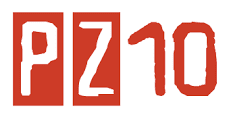Production and Operations Management
Production and Operations Management ("POM") is about
the transformation of production and operational inputs into "outputs"
that, when distributed, meet the needs of customers.
The process in the above diagram is often referred to as the
"Conversion Process". There are several different methods
of handling the conversion or production process - Job, Batch, Flow and
Group
POM incorporates many tasks that are interdependent, but which
can be grouped under five main headings:
PRODUCT
Marketers in a business must ensure that a business sells products
that meet customer needs and wants. The role of Production and Operations
is to ensure that the business actually makes the required products in accordance
with the plan. The role of PRODUCT in POM therefore concerns areas such
as:
- Performance
- Aesthetics
- Quality
- Reliability
- Quantity
- Production costs
- Delivery dates
- Performance
- Aesthetics
- Quality
- Reliability
- Quantity
- Production costs
- Delivery dates
PLANT
To make PRODUCT, PLANT of some kind is needed. This will comprise
the bulk of the fixed assets of the business. In determining which PLANT to
use, management must consider areas such as:
- Future demand (volume, timing)
- Design and layout of factory, equipment, offices
- Productivity and reliability of equipment
- Need for (and costs of) maintenance
- Heath and safety (particularly the operation of equipment)
- Environmental issues (e.g. creation of waste products)
- Design and layout of factory, equipment, offices
- Productivity and reliability of equipment
- Need for (and costs of) maintenance
- Heath and safety (particularly the operation of equipment)
- Environmental issues (e.g. creation of waste products)
PROCESSES
There are many different ways of producing a product. Management
must choose the best process, or series of processes. They will consider:
- Available capacity
- Available skills
- Type of production
- Layout of plant and equipment
- Safety
- Production costs
- Maintenance requirements
- Available skills
- Type of production
- Layout of plant and equipment
- Safety
- Production costs
- Maintenance requirements
PROGRAMMES
The production PROGRAMME concerns the dates and times of the
products that are to be produced and supplied to customers. The decisions
made about programme will be influenced by factors such as:
- Purchasing patterns (e.g. lead time)
- Cash flow
- Need for / availability of storage
- Transportation
- Cash flow
- Need for / availability of storage
- Transportation
PEOPLE
Production depends on PEOPLE, whose skills, experience and motivation
vary. Key people-related decisions will consider the following areas:
- Wages and salaries
- Safety and training
- Work conditions
- Leadership and motivation
- Unionisation
- Communication
- Safety and training
- Work conditions
- Leadership and motivation
- Unionisation
- Communication
What Are the Functions of Production & Operations?
The function of the production and operations department(s) in a company
is to take inputs and fashion them into outputs for customer use.
Inputs can be concrete physical objects, data driven, or service driven.
The outputs can be intended for consumer use or for business use. The
goal of production and operations is to create an end product in the
most economic and efficient way possible.
-
Creation
-
The foundation of every production and operations department is the creation of goods or services. Traditionally, production included the physical assembly of goods, but production can also include data-based goods such as websites, analysis services and order processing services.
Customer Service
-
In many companies, the production and operations department contains the customer-facing customer service department that addresses the needs of the customer after the purchase of goods or services. The support function usually is served through phone, online or mail based support.
Profit
-
The main function of the production and operations department is to produce a product or service that creates profit and revenue for the company. Actualization of profit requires close monitoring of expenses, production methodology and cost of inputs.
Evaluation
-
Every production and operations department must function as self-evaluating entity that monitors the quality, quantity, and cost of goods produced. Analysis usually takes the form of statistical metrics, production evaluation and routine reporting.
Tasks
-
Common task functions in a production and operation department include forecasting, scheduling, purchasing, design, maintenance, people management, flow analysis, reporting, assembly and testing.
Fulfillment
-
Production and operations departments typically function as a fulfillment entity that ensures the timely delivery of the output from production to customers. Traditionally fulfillment is a shipping and mailing based function, but can be electronically based in a data-driven product.
Analysis
-
Standard analysis functions in a production and operations department include critical path analysis, stock control analysis, utilization analysis, capacity analysis, just-in-time analysis of inputs, quality metrics analysis and break-even analysis.
-



I learned a lot of interesting from your post. But I would advise you to use more templates with graphics and diagrams. They will give a good look to your office. Here on this page you will find a cool template http://charts.poweredtemplate.com/powerpoint-diagrams-charts/data-driven-diagrams-charts/0/index.html.
ReplyDelete